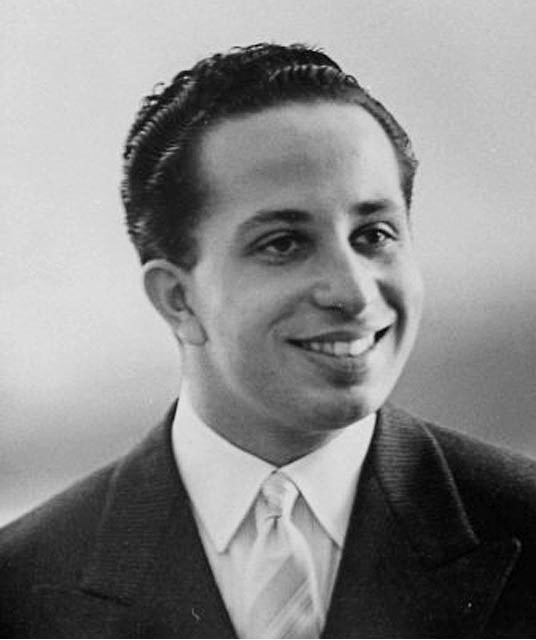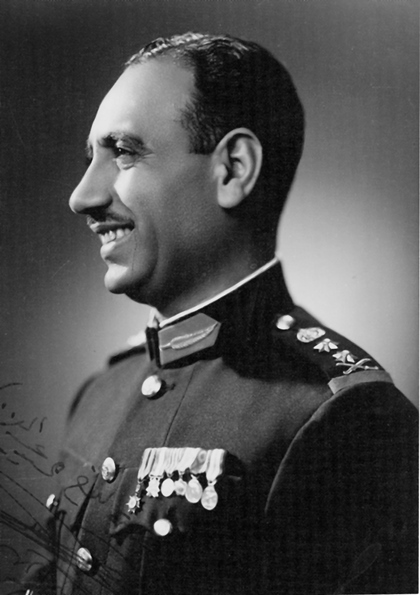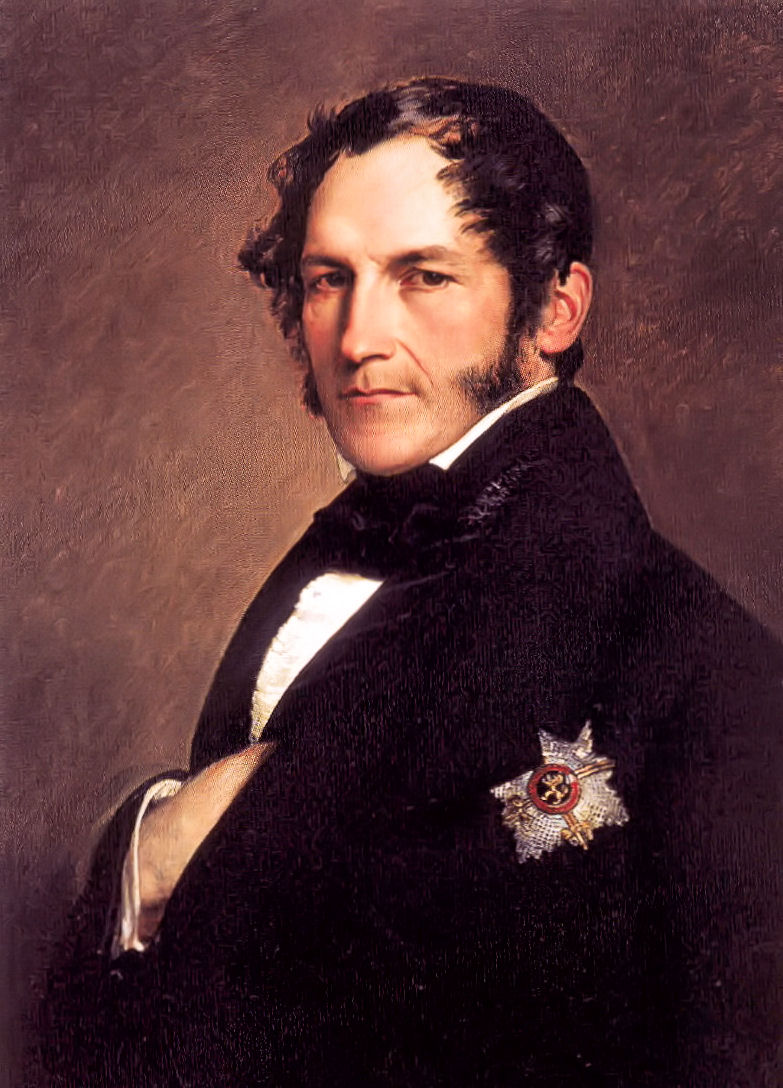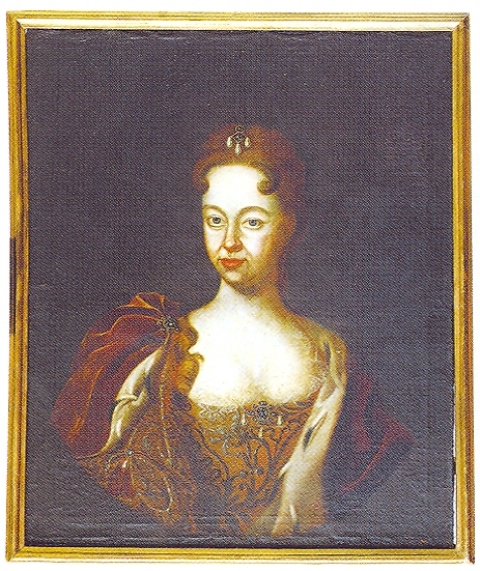© Unofficial Royalty 2023
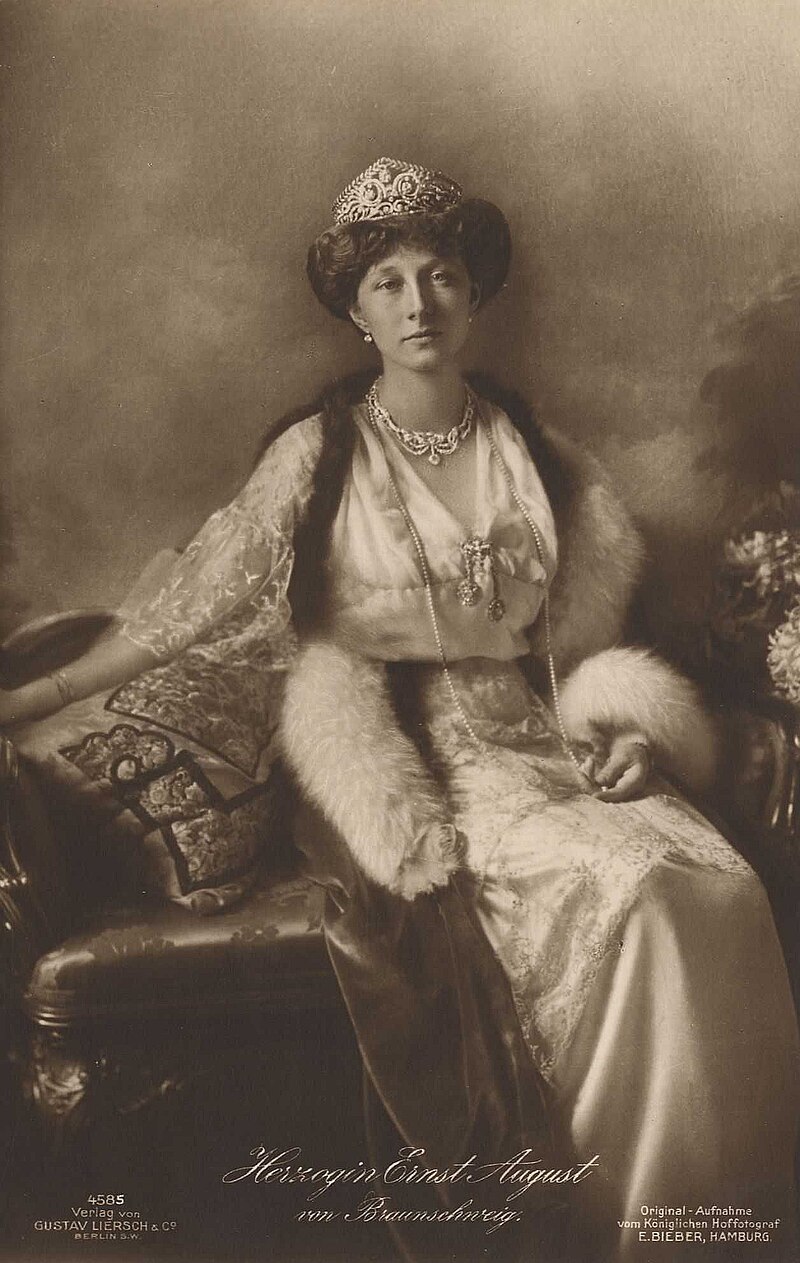
Viktoria Luise of Prussia, Princess of Hanover, Duchess of Brunswick; Credit – Wikipedia
December 11, 1282 – Death of Llywelyn ap Gruffydd, Prince of Wales at the Battle of Orewin Bridge near Builth Wells, Wales
Llywelyn ap Gruffydd was the native Prince of Wales from 1258 until his death in 1282. Llywelyn was the son of Gruffydd ap Llywelyn Fawr and grandson of Llywelyn the Great (Llywelyn I), and he was one of the last native and independent princes of Wales before its conquest by Edward I of England and English rule in Wales that followed.
Unofficial Royalty: Llywelyn ap Gruffydd, Prince of Wales (article coming soon)
December 11, 1718 – Death of King Karl XII of Sweden during a siege at Fredriksten Fortress in Halden, Norway; buried at Riddarholmen Church in Stockholm, Sweden
Karl XII became King of Sweden at the age of fifteen in 1697 upon the death of his father Karl XI, King of Sweden, and reigned for twenty-one years. Karl never married. For almost all of his reign, Karl XII led Sweden in the Great Northern War (1700 – 1721). He acted as the general of the army and achieved significant success for several years. After losing a decisive battle in which he was wounded and lost one-third of his forces, Karl fled to the Ottoman Empire and remained there for five years. Upon his return to Sweden, he started an offensive military campaign and ultimately lost his life in battle. In 1718, Karl once again invaded Norway by laying siege to Fredriksten Fortress. On December 11, 1718, while in the trenches close to the perimeter of Fredriksten Fortress, 36-year-old Karl was hit in the head by a projectile that entered the left side of his skull and exited on the right side of his skull, instantly killing him. The invasion was abandoned and Karl’s body was returned to Sweden where he was buried at Riddarholmen Church in Stockholm.
Unofficial Royalty: King Karl XII of Sweden
December 11, 1756 – Death of Archduchess Maria Amalie of Austria, wife of Karl VII, Holy Roman Emperor who was also Karl I, Elector of Bavaria, at Nymphenburg Palace in Munich, Electorate of Bavaria, now in the German state of Bavaria; buried in the Theatinerkirche in Munich
The daughter of Joseph I, Holy Roman Emperor, Maria Amalie married Karl of Bavaria, the heir to the Electorate of Bavaria. They had seven children but only four survived to adulthood. While the War of the Austrian Succession was occurring, Karl, now Elector of Bavaria was elected Holy Roman Emperor Karl VII in 1742, and his wife Maria Amalie was now Holy Roman Empress. Karl VII’s three-year reign as Holy Roman Emperor was greatly overshadowed by the War of Austrian Succession. After the death of her husband in 1745, Maria Amalie lived at the home her husband had given her, Fürstenried Palace, for the rest of her life. She died at Nymphenburg Palace in Munich on December 11, 1756, aged 55. Like her husband, she was buried in the Theatinerkirche in Munich.
Unofficial Royalty: Maria Amalie of Austria, Holy Roman Empress, Electress of Bavaria
December 11, 1817 – Death of Countess Maria Walewska, mistress of Emperor Napoleon I of France, born Countess Maria Łączyńska, Countess d’Ornano via her second marriage, in Paris, France; her heart was interred in the Ornano family crypt at the Père Lachaise Cemetery in Paris, France and her body was buried with her birth family in Kiernozia, Poland
Maria Walewska was a member of the Polish nobility, and from 1807 – 1810, was the mistress of the French Emperor Napoleon I, with whom she had one son. The end of her relationship with Napoleon was very amicable, and Napoleon ensured that Marie and their son were very well provided for financially. In 1812, Marie divorced her husband and received half of his estates, which in addition to the money provided by Napoleon, made Marie a very wealthy woman. In 1816, she married for a second time, to Philippe Antoine, Count d’Ornano, a prominent military leader and a second cousin of Napoleon. In January 1817, while on a visit to Poland, she was diagnosed with a kidney disease, which became worse during her pregnancy and resulted in the birth of a son. Marie’s health continued to deteriorate and she died at just 31 years old.
Unofficial Royalty: Countess Maria Walewska, Mistress of Emperor Napoleon I of France
December 11, 1826 – Death of Maria Leopoldina of Austria, Empress of Brazil, Queen of Portugal, first wife of Pedro I of Brazil/Pedro IV of Portugal, in childbirth at the Palacio de São Cristovão in Rio de Janeiro, Brazil; buried first in the Ajuda Abbey in Rio de Janeiro, since 1954 in the Ipiranga monument in São Paulo, Brazil
Maria Leopoldina was the daughter of Emperor Franz I of Austria and the second of his four wives, Maria Theresa of Naples and Sicily. In 1817, Maria Leopoldina married Pedro, Crown Prince of Portugal and Prince of Brazil. At that time, Brazil was ruled as a kingdom united with Portugal. In 1807, the Portuguese royal family had moved to Brazil to escape the Napoleonic invasion and had remained in Brazil where Rio de Janeiro became the de facto capital of the Portuguese Empire. Maria Leopoldina and Pedro had seven children including Queen Maria II of Portugal. Pedro was quite uneducated and the intelligent and well-educated Leopoldina quickly gained influence over her husband. Pedro discussed all government affairs with her and usually followed her advice. In August 1822, Pedro appointed Leopoldina Regent while he went on a political trip. While Pedro was away, Leopoldina received news that Portugal was about to take action, and without waiting for Pedro’s return, met with the Council of State and signed the Decree of Independence, declaring Brazil independent from Portugal. Pedro I was declared Emperor of Brazil. 29-year-old Leopoldina died at the Palacio de São Cristovão on December 11, 1826, from puerperal fever (childbed fever) after a miscarriage.
Unofficial Royalty: Maria Leopoldina of Austria, Empress of Brazil, Queen of Portugal
December 11, 1830 – Birth of Kamehameha V, King of the Hawaiian Islands in Honolulu on the island of Oahu in the Kingdom of the Hawaiian Islands, now in the state of Hawaii
Unofficial Royalty: Kamehameha V, King of the Hawaiian Islands
December 11, 1850 – Birth of Lady Mary Victoria Hamilton, Hereditary Princess of Monaco, first wife of Prince Albert I of Monaco, daughter of William Hamilton, 11th Duke of Hamilton, at Hamilton Palace in Hamilton, South Lanarkshire, Scotland
Besides having an American mother, Prince Albert II of Monaco has a Scottish great-grandmother, and not on his mother’s side, but on his father’s side. Lady Mary Victoria Hamilton was the daughter of William Alexander Anthony Archibald Hamilton, 11th Duke of Hamilton and Princess Marie Amelie of Baden. French Emperor Napoléon III suggested a match between the future Prince Albert I of Monaco and Lady Mary Victoria. The couple married in 1869 but the marriage was unsuccessful. Mary Victoria did not like her husband and did not like Monaco and the Mediterranean, which was so unlike her native Scotland. 19-year-old, pregnant Mary Victoria left Monaco with her mother and headed to her mother’s family home in the Grand Duchy of Baden. It was in Baden that Mary Victoria gave birth to the future Prince Louis II of Monaco in 1870. Mary Victoria and Albert never reconciled. Their marriage was annulled by the Roman Catholic Church in 1880 and civilly dissolved the same year by Prince Charles III of Monaco. Their son Prince Louis was raised in Baden by his maternal grandmother and did not see his father until he was 11-years-old. Mary Victoria married a second time in 1880 to Count Tassilo Festetics de Tolna, a Hungarian noble, and the couple had four children. Mary Victoria’s second marriage was a happy one and lasted over 40 years until the death of her second husband.
Unofficial Royalty: Lady Mary Victoria Hamilton, Hereditary Princess of Monaco
December 11, 1872 – Death of Kamehameha V, King of the Hawaiian Islands in Honolulu on the island of Oahu in the Kingdom of the Hawaiian Islands, now in the state of Hawaii
Unofficial Royalty: Kamehameha V, King of the Hawaiian Islands
December 11, 1898 – Death of Sir William Jenner, 1st Baronet, Queen Victoria’s Physician-in-Ordinary from 1861 – 1890, at his estate Greenwood in Durley, Hampshire, England
Jenner took an interest in pathology, particularly in typhus and typhoid fever. Through his work, Jenner confirmed in 1849 that typhus and typhoid fever were two distinct diseases with very different causes. His work on the subject earned him an international reputation and made a huge impact on public health. With the importance of Jenner’s pathology work, his career quickly progressed. He taught pathological anatomy at the University College of London and became a staff doctor at University College Hospital. In 1861, his fame reached Queen Victoria who appointed him her Physician-Extraordinary. Jenner was one of the doctors who treated Prince Albert during his final illness. Despite his failure to save Albert, Jenner made a favorable impression on Queen Victoria, who appointed him her Physician-In-Ordinary in 1862. Queen Victoria and Jenner became lifelong friends, and in 1868, she created Jenner a Baronet. In December 1878, Jenner went to Darmstadt to attend Princess Alice, Grand Duchess of Hesse and by Rhine, Queen Victoria’s daughter who had become ill with diphtheria while nursing her family, also ill with the disease. Sadly, Alice died seventeen years to the day of her father’s death. In 1890, Jenner was forced to retire from his position as Physician-In-Ordinary due to ill health. He went to live at his estate, Greenwood in Durley, Hampshire, England, where he died at the age of 83.
Unofficial Royalty: Sir William Jenner, 1st Baronet
December 11, 1936 – Abdication of King Edward VIII of the United Kingdom; his brother becomes King George VI of the United Kingdom
On December 11, 1936, King Edward VIII performed the last act of his reign, the royal assent to His Majesty’s Declaration of Abdication Act 1936, necessary because only Parliament can change the succession to the throne. On the evening of December 11, 1936, once again His Royal Highness Prince Edward, the former king gave his famous radio speech in which he said, “I have found it impossible to carry the heavy burden of responsibility and to discharge my duties as king as I would wish to do without the help and support of the woman I love.” On December 12, 1936, at the accession meeting of the Privy Council, the new King George VI announced he was going to give his brother the title Duke of Windsor with the style of Royal Highness. Letters Patent dated May 27, 1937 re-conferred the “title, style, or attribute of Royal Highness” upon the Duke of Windsor, but specifically stated that “his wife and descendants, if any, shall not hold said title or attribute”.
Unofficial Royalty: Duke of Windsor, former King Edward VIII
December 11, 1950 – Death of Ernst II, Prince of Hohenlohe-Langenburg in Langenburg, Baden-Württemberg, Germany; buried in the family cemetery at Schloss Langenburg in Langenburg
In 1896, Ernst married Alexandra of Edinburgh and Saxe-Coburg and Gotha, a granddaughter of Queen Victoria. The couple was second cousins. Their grandmothers, Queen Victoria and Princess Feodora of Leiningen were half-sisters. Ernst and Alexandra had five children including Gottfried, Prince of Hohenlohe-Langenburg who married Princess Margarita of Greece and Denmark, a sister of Prince Philip, Duke of Edinburgh. In 1900, Ernst’s father-in-law Prince Alfred, Duke of Edinburgh and Duke of Saxe-Coburg and Gotha died, and the ducal throne of Saxe-Coburg and Gotha passed to Alexandra’s cousin, Charles Edward, Duke of Albany. Because Charles Edward was just 16 at the time, Ernst was appointed as Regent until the new Duke reached his majority in 1905. During World War I, Ernst served the German Empire as General Delegate to the Eastern Front and also served as a special envoy to Constantinople and the Balkans in 1915. In 1936, Ernst joined the Nazi Party. Following World War II, Ernst retired from official service and lived a quiet and more private life. Ernst died at the age of 87, having survived his wife by eight years.
Unofficial Royalty: Ernst II, Prince of Hohenlohe-Langenburg
December 11, 1980 – Death of Princess Viktoria Luise of Prussia, Princess of Hanover, Duchess of Brunswick, daughter of Wilhelm II, German Emperor and King of Prussia, in Hanover, Germany; buried in the Royal Mausoleum in the Berggarten at Herrenhausen Gardens in Hanover, Germany
Viktoria Luise was the youngest child of the seven children and the only daughter of Wilhelm II, German Emperor and King of Prussia. Through her father, she was a great-granddaughter of Queen Victoria. In 1913, Viktoria Luise married Ernst August III, Duke of Brunswick. Viktoria Luise and Ernst August had five children. Viktoria Luise’s husband was forced to abdicate on November 8, 1918, when the monarchies in Germany were abolished. The following year, he also lost his British title as a Prince of the United Kingdom under the Titles Deprivation Act. Viktoria Luise was widowed in 1953. After living many years in Brunswick, her health began to fail in the fall of 1980, and she moved to the Friederikestift, a hospital in Hanover, where she died at the age of 88.
Unofficial Royalty: Princess Viktoria Luise of Prussia, Princess of Hanover, Duchess of Brunswick
This article is the intellectual property of Unofficial Royalty and is NOT TO BE COPIED, EDITED, OR POSTED IN ANY FORM ON ANOTHER WEBSITE under any circumstances. It is permissible to use a link that directs to Unofficial Royalty.

